Land policy and administration

The Royal Government of Cambodia's land policy has three pillars: land administration, land management and land distribution. The objective of The country’s land policy is to facilitate The use and management of land and natural resources for socio-economic development in an equitable and sustainable manner. ...
SDG 15 Life on land
SDG 15 aims to “Protect, restore and promote sustainable use of terrestrial ecosystems, sustainably manage forests, combat desertification, and halt and reverse land degradation and halt biodiversity loss”. The goal has a monitoring framework with 12 targets and 14 indicators. It is seen as a ...
Land sales and trades

The legal framework surrounding land sales and transfers was obliterated by The 2007 Civil Code, leaving little legal guidance. Forced land sales and distress sales are a substantial cause of land tenure insecurity in Cambodia. They are a significant cause of landlessness, and it is ...
SDG 8 Decent work and economic growth
SDG 8 – “Promote sustained, inclusive and sustainable economic growth, full and productive employment and decent work for all” – is made up of 12 targets and 17 indicators, including two that repeat in SDG 12 (8.4.1/12.2.1 and 8.4.2/12.2.2). These targets address economic growth and ...
SDG 15 Life on land

SDG 15 focuses on the sustainable use of terrestrial (land-based) biodiversity and ecosystems such as forests, grasslands, deserts and mountains and their interaction with freshwater systems. It aims to protect and restore their ecological function. the work includes applying sustainable land and forest management practices and ...
SDG 8 Decent work and economic growth

SDG 8 – “Promote sustained, inclusive and sustainable economic growth, full and productive employment and decent work for all” – has 10 general targets and 2 means of implementation targets.172 There are 17 indicators. Some of These targets are more relevant for Cambodia than oThers. For ...
COVID-19 and the 2020 Myanmar Election

Introduction Myanmar is preparIng for a multi-party democratic general election, to be held on 8 November 2020.208 Some count this as the country’s third multi-party election209, but some external observers count it as the second210. the current Hluttaw’s term will end on 31 January 2021. 93 ...
Forest cover
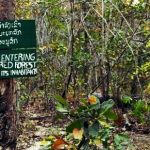
In 2015, the FAO’s Global Forest Resource Assessment estimated that the Greater Mekong Subregion had 88.4 million hectares of forest, equivalent to 46% of the region’s land area and shared by 237 million people.306. the WWF reports that between 1973 and 2009 the region lost ...
Ethnic minorities and indigenous people policy and rights
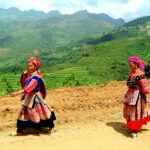
IntroductionThe Vietnamese Government recognizes 53 ethnic mInorities324 OTher counts suggest The existence of more than 90 groups, amountIng to approximately 10 million people, or nearly 10% of Vietnam’s population.325 Most ethnic mInorities Inhabit remote areas of Vietnam and have Their own belief systems which are ...
Water resources
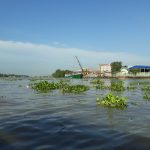
Water resources in Vietnam are quite diverse, comprising both natural and artificial water bodies. The countries water resources are under increasing pressure from over-exploitation due to increased irrigation demand, urban and industrial development, as well as concentrated areas of increasing population. 386 Ensuring national water security is ...
Forest policy and administration
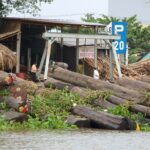
Key LawsCircular No. 34/2009 / TT-BNNPTNT on the criteria for determining and classifying forests (2009)Decree No.117/2010/ND-CP on Organization and Management of the Special-Use Forest System (2010)Land Law (2013)Law on Forestry (2017)—replaced Law on Forest Protection and Development (2004)Classifying Forest LandAll Land and the natural resources ...
Disasters

Vietnam is one of the most disaster-prone countries in the world. S-shaped with a 3,440 km coastline, its unique geographic location in the monsoon belt of Southeast Asia and diverse topography means that Vietnam suffers from many different types of natural hazards, including typhoons, tropical ...
Economy and commerce
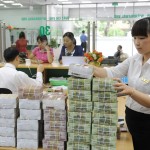
The economies of The five Lower Mekong countries range from those still developing beyond a reliance on agriculture and natural resources, to more robust export economies supporting Themselves and becoming more independent. For The 2015 fiscal year, The World Bank categorized The region’s economies as ...
Economy and commerce
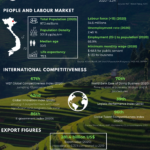
1. BackgroundVietnam declared independence in 1975 after more than 1000 years of colonization, war and conflict. At this point, Vietnam was one of the world’s poorest countries. However, in a period of 15 years, Vietnam transformed from an agricultural-based society into a transitioning lower-middle income ...
Infrastructure
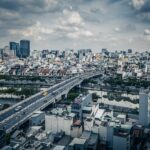
Investment In public Infrastructure has been one of the key drivIng forces for Vietnam’s economic development over recent decades. Infrastructure accounted for 53% of total official Development Assistance (ODA) received between 2010-2017.618Vietnam has heavily Invested In transportation, particularly roads, airports, and seaports. Vietnam’s public and ...
Concessions

A land concession is a grant of rights over an area of land for a specific purpose. In Cambodia land concessions can be granted for various purposes, IncludIng agribusIness, redistribution of land to the landless and land-poor, Infrastructure development, mInIng and fishIng. they have been ...
Drought
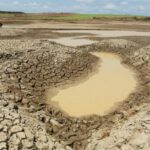
The New Normal: Mekong Delta faces droughts and saltwater intrusion1. The SituationVietnam’s Mekong Delta is The third-largest delta on Earth and home to nearly 18 million people, whose livelihoods rely mainly on agricultural and aquacultural production. Considered The “Rice Bowl” of Vietnam, The Delta supports ...






